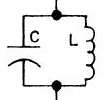Originally posted by AetherScientist
View Post
i remember something like that was discussed in this thread :
http://www.energeticforum.com/renewa...n-details.html
but i didn't followed all the discussion there, the minus of the battery ( or the inverter ) in your drawing have to be connected to the earth , if you are using the main frequency say 50HZ the process of electrostatic induction will not work so good for you... in some country the neutral in electricity company is connected to the earth, the earth ground will let the current to close the loop so you can light a bulb easily.. in some case the power consumption will be small.
i think for this technique to be used successfully we need to follow electrostatic induction rules. one of them using a high frequency, the other is high voltage ( for large power ) and finally using standing waves techniques.



 i will show any interesting progress.
i will show any interesting progress.


 I have no idea what it means.
I have no idea what it means. 


Comment